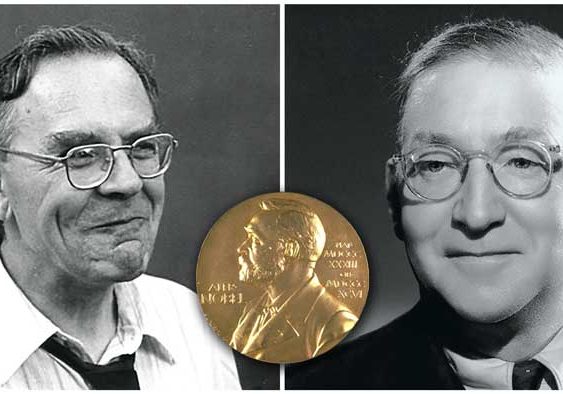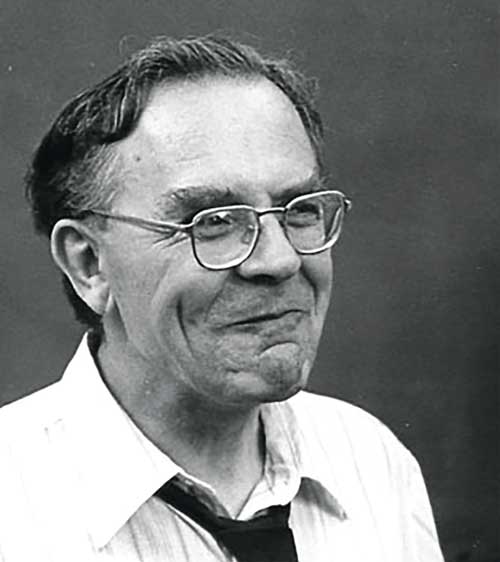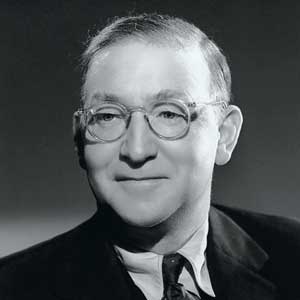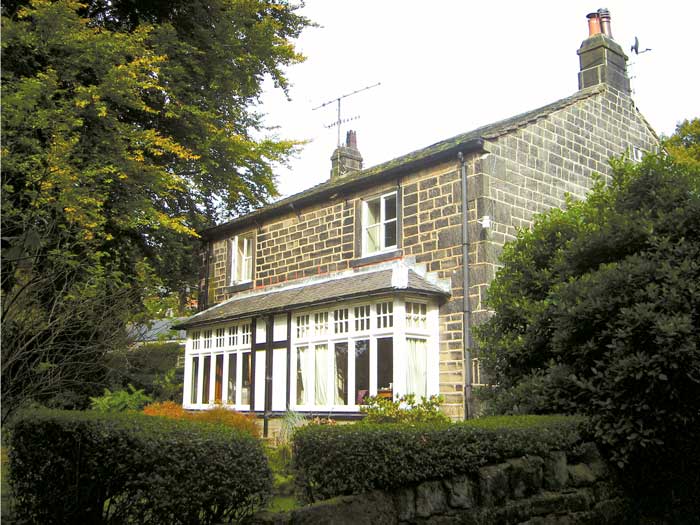
The small Northern town with two Nobel Prize winners
by Eddy Rawlinson
Alfred Nobel made a fortune out of explosives and was to leave much of his wealth for the establishment of the Nobel Prize. In 1895 he had changed his will in favour of the prize after becoming concerned that his invention, dynamite, was being used for military purposes. Since 1901 the Nobel Prize has been honouring men and women from all parts of the world for their achievements in Medicine and Physiology, Literature, Peace, Chemistry and Physics.

Sir Geoffrey Wilkinson
There will be very few cities or towns throughout the world that can claim they had two scholars who went to the same school, were taught by the same maths teacher and both won a Nobel Prize. The town of Todmorden can boast that claim to fame. Listed with Nobel Prize winners such as Marie Curie and Albert Einstein are former Todmorden born boys, Sir John Cockcroft and Sir Geoffrey Wilkinson. They went to Todmorden Secondary School which later became Todmorden Grammar School.

Sir John Cockcroft
John Douglas Cockcroft and Geoffrey Wilkinson were brought up in a different lifestyle. Cockcroft was the son of a cotton manufacturer while Wilkinson wrote of his father being a house painter and his mother working as a weaver. His grandfather, one of twelve children arrived in Todmorden from Boroughbridge, Yorkshire, and Wilkinson’s relatives worked in local cotton mills.
Cockcroft lived in a Victorian Villa in Walsden. Wilkinson described the place where he was born as having been demolished by the local council and being unfit for habitation. Later the family moved to a large Victorian house near the centre of Todmorden.
Sir Geoffrey Wilkinson took an interest in chemistry at an early age through his uncle marrying into a family who owned a small chemical factory and he wrote of playing around in their small laboratory. In 1939 he obtained a Royal Scholarship for study at the Imperial College of Science where two years later he came top of the class, moving on to nuclear energy research in Canada. He went on to Harvard in the United States and returned to England in 1955.
- Geoffrey Wilkinson’s home in Todmorden
- John Cockcroft’s home in Todmorden
“If Sir John had not insisted on filters being fitted the nuclear fall out would have spread over the North of England”
He was described by a friend as being “at the lower end of medium height, medium build, with a Yorkshire accent modified by time, but with strong echoes of Freddie Truman. He had a boyish grin, which was a mirror of his Puckish humour and was proud to be a Yorkshire man, through and through.”
In 1973 through his distinguished career in chemistry Geoffrey Wilkinson was awarded the joint Nobel Prize along with Professor Ernst Otto Fischer for what was described as “Chemistry for Chemists”. Three years later he was knighted and Sir Geoffrey died in 1996.
Sir John Douglas Cockcroft is described as the man who saved Britain from what could have been a nuclear catastrophe. At the time he was at the forefront of Britain’s need to produce an atomic bomb. Sir John was one of the three leading scientists involved with the building of the atomic energy plant at Windscale in Cumbria. He already had a distinguished career as a physicist and was known as the man who was first to split the atom.
After Todmorden Secondary School John Cockroft attended Manchester University, served in the First World War and went to St John’s College, Cambridge, where he took honours in
mathematics. During the Second World War he became involved with the United States of America and Canada in the development of nuclear power. He was also head of Britain’s Air Defence and Research Development Establishment responsible for RADAR and after the war became a director of Atomic Energy Research Establishment at Harwell. Harwell was the centre for Britain’sdevelopment of the atomic bomb. John Cockroft was knighted in 1948.
In 1951 Sir John with Irishman Ernest Walton was awarded the Nobel Prize for what was described as “work in the use of accelerated particles to study atomic nucleus” While working
on the Windscale development Cockcroft insisted the two chimneys at Windscale were fitted with filters to stop any serious leaks of radiation. Originally the chimneys were designed without filters and they became known as Cockroft’s Folly. That was until October 1957 when Windscale’s reactor overheated and I will be forever thankful to Sir John for putting those filters on Windscale’s chimneys.

Chimneys with filters fitted in background
One of the nicer assignments when working for a national newspaper is photographing animals and on October 9th 1957 I was to spend the morning taking photographs at Manchester’s Belle Vue Zoo. Chimpanzees made amusing subjects, but our main interest was a Tigon, born through the liaison of a tiger with a lion.
It was a Daily Express office rule that checks had to be made with the office in Manchester every hour in case there was a more important assignment to cover. I made my hourly check and it appeared all hell was loose in the office. “Get up to Windscale, it’s on fire” was the sharp instruction from the other end of the line. You don’t waste time asking questions, in such a situation you just go.
It was a hard and fast drive along the A6, stopping at Milnthorpe to do my hourly check where I learned more of the story. Fire appliances were at the plant and it looked serious, the reactors were overheating, I was told. In just over two hours I was at Windscale and I certainly had left some rubber from my tyres on the busy roads.
“Sir John Douglas Cockcroft is described as the man who saved Britain”
I drove straight up to the plant where hoses were lying on the ground intertwined like strings of spaghetti with lots of firemen running around the place. There were no police or security men to restrict my entry. They were busy helping the firemen tackling a fire we couldn’t see. Out of one of the chimneys there was a slight emission but nothing you would expect to get
my office in such a panic. I did general scenes including some dark smoke coming out of one of the chimneys then went to check in with the office.
I started to tell the picture desk what photographs I had taken from inside the yard and was interrupted by the picture editor asking “You’ve been inside Windscale? I again told him I had taken pictures inside the yard. “It’s supposed to be leaking radiation” were his next words. “Well all I can see is a bit of smoke” I told him.
Walking back again through the gates I was unaware of being in the midst of what at the time was the world’s worst nuclear accident. News about the fire had been released by the Atomic Energy Authority and although it was only a short statement our science correspondent was already predicting a major incident. At Windscale we were unaware of the panic that was also going on inside the plant as they tried to cool the overheating reactors.
Word got out that preparations were being made to evacuate the women and children from the area as the fire inside the nuclear plant was out of control. The situation was becoming serious but there was nothing actually to be seen that could be described as dramatic for pictures. Inside the building Tom Touhy, deputy to the manager, had donned full protective clothing and climbed up several times to look down into the blazing reactor. It was an act of immense bravery. The hoses we saw outside were sending water into the reactor and fans were being used in the hope they would blow out the flames.
The reactor was getting so hot it was feared there would be a complete melt down. In desperation Tom Touhy ordered the fans to be shut off and the flames just died down. It was as simple as that and after four long days the fire went out. The evacuation didn’t take place. I stayed three weeks at Seascale, adjoining the plant and we had to “scratch” for pictures as there was nothing coming out of Windscale. There was the photograph of an ugly building with its twin towers, milk being poured away through contamination, a family from Colne like other parents arriving to take their girls, who were boarders, away from Calder Girls School.
We were never told of Tom Tuohy’s bravery nor of the instructions given by Sir John Cockcroft when Windscale was being built that filters had to be fitted to the chimneys. Everything at the time was top secret. It was only later we were to learn that if Sir John had not insisted on filters being fitted the nuclear fall out would have spread over the North of England and led to a mass evacuation of people.
Rumours started about the effects the accident. “It may cause a form of cancer for those exposed to the radiation and babies might be born with deformities”, quite frightening. On October 8th 2007 it was a reassuring fifty years after the accident to see Tom Tuohy, the man who looked down into the blazing inferno several times, was still alive. Tom, now in his late eighties and living in New Zealand, took part in the BBC documentary about Windscale. …and thanks to Sir John Cockcroft O.M, K.C.B., C.B.E., F.R.S., D.Sc., LL.D, a Todmorden born lad there are many still about to tell the story of being at Windscale when the world had its first big nuclear accident. Sir John died in 1967.
Both Sir John and Sir Geoffrey were made Freemen of Todmorden.





